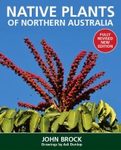By: Manuel Pardo-de-Santayana(Editor), Andrea Pieroni(Editor), Rajindra K Puri(Editor)
394 pages, b/w photos, b/w illustrations, b/w maps, tables
![Ethnobotany in the New Europe Ethnobotany in the New Europe]()
Click to have a closer look
About this book
Contents
Customer reviews
Biography
Related titles
About this book
The study of European wild food plants and herbal medicines is an old discipline that has been invigorated by a new generation of researchers pursuing ethnobotanical studies in fresh contexts. Modern botanical and medical science itself was built on studies of Medieval Europeans' use of food plants and medicinal herbs. In spite of monumental changes introduced in the Age of Discovery and Mercantile Capitalism, some communities, often of immigrants in foreign lands, continue to hold on to old recipes and traditions, while others have adopted and enculturated exotic plants and remedies into their diets and pharmacopoeia in new and creative ways.
Now in the 21st century, in the age of the European Union and Globalization, European folk botany is once again dynamically responding to changing cultural, economic, and political contexts. The authors and studies presented in Ethnobotany in the New Europe reflect work being conducted across Europe's many regions. They tell the story of the on-going evolution of human-plant relations in one of the most bioculturally dynamic places on the planet, and explore new approaches that link the re-evaluation of plant-based cultural heritage with the conservation and use of biocultural diversity.
Contents
Acknowledgements
Chapter 1. The Biocultural Dynamism of Europe, Past and Present Manuel Pardo-de-Santayana, Andrea Pieroni and Rajindra K. Puri
Chapter 2. People and Plants in LA"pushA". Traditional Medicine, Local Foods, and Post-Communism in a Northern Albanian Village Andrea Pieroni
Chapter 3. The Cultural Significance of Wild Gathered Plant Species in Kartitsch (Eastern Tyrol, Austria) and the Influence of Socio-Economic Changes on Local Gathering Practices Anja Christanell, Brigitte Vogl-Lukasser, Christian R. Vogl and Marianne Gutler
Chapter 4. The Botanical Identity and Cultural Significance of Lithuanian Jovaras - an Ethnobotanical Riddle Daiva AeeA'kauskaite and Bernd Gliwa
Chapter 5. Plants as Symbols in Scotland Today Veerle van den Eynden
Chapter 6. Norway's Rosmarin (Rhododendron tomentosum) in past and present tradition TorbjA rn Alm and Marianne Iversen
Chapter 7. A Preliminary Study of the Plant Knowledge and Grassland Management Practices of English Livestock Farmers, with Implications for Grassland Conservation Jenny McCune
Chapter 8. The Use of Wild Edible Plants in the Graecanic Area in Calabria, Southern Italy Sabine Nebel and Michael Heinrich
Chapter 9. The Ecology and Use of Edible Thistles in Aevora, Alentejo, Southeastern Portugal Maria Jose Barao and Alexandra Soveral Dias
Chapter 10. Spring is Coming: the Gathering and Consumption of Wild Vegetables in Spain Javier Tardio
Chapter 11. Persistence of Wild Food and Wild Medicinal Plant Knowledge in a North-Eastern Region of Portugal Ana Maria Carvalho and Ramon Morales
Chapter 12. Chamomiles in Spain: the Dynamics of Plant Nomenclature Manuel Pardo-de-Santayana and Ramon Morales
Chapter 13. Local Innovations to Folk Medical Conditions: Two Major Phytotherapeutic Treatments from the Maltese Islands Timothy J. Tabone
Notes on Contributors
Bibliography
Index
Customer Reviews
Biography
Manuel Pardo-de-Santayana is an Assistant Professor of Botany at the Universidad Autonoma of Madrid. He has been researching contemporary and historical uses of Spanish medicinal and wild food plants, homegardens, and folk botanical taxonomies at the Royal Botanical Garden of Madrid (CSIC) and the School of Pharmacy (University of London) since 1995.
Andrea Pieroni holds a PhD from the University of Bonn, Germany. He is an Associate Professor of Plant Biology and Ethnobotany at the University of Gastronomic Sciences in Pollenzo/Bra, Northern Italy and Editor-in-Chief of the Journal of Ethnobiology and Ethnomedicine. His research focuses on gastronomic and medical ethnobotany in the Mediterranean and in the Balkan areas, as well as among migrant communities and diasporas in Europe.
Rajindra K. Puri is a Senior Lecturer in environmental anthropology and ethnobiology at the University of Kent at Canterbury, UK. With Christian Vogl he co-organizes a summer field school for methods in ethnobotany in the Austrian Alps and works with the Global Diversity Foundation in Morocco, Malaysia, and Namibia.
By: Manuel Pardo-de-Santayana(Editor), Andrea Pieroni(Editor), Rajindra K Puri(Editor)
394 pages, b/w photos, b/w illustrations, b/w maps, tables
"The text itself is useful, entertaining, and informative. In addition, each chapter is a model for modern ethnobotanical studies. Rather than simply cataloguingplant use, each researcher analyzes the historical, societal, economic, or political aspects relevant to changes in human plant usage. Thus, the authors provide a true ethnobotanical resource that can be instructive to academic audiences"
– Choice
"This book bridges biological and social science disciplines and it is useful for all those with an interest in biocultural diversity issues. I believe that this book can be useful not only for scientists and scholars active in the field, but also for those engaged in environmental conservation and management."
– International Journal of Environmental Studies
"The merit of the book is that it offers a glimpse in the cultural diversity of Europe as a reflection of its history and shows some of the trends in both local ecological knowledge and ethnobotanical research in the old continent [...] I recommend this book to any scholar interested in doing ethnobotanical research in Europe and to any student that wants to carry out ethnobotanical research in Europe."
– Economic Botany






































